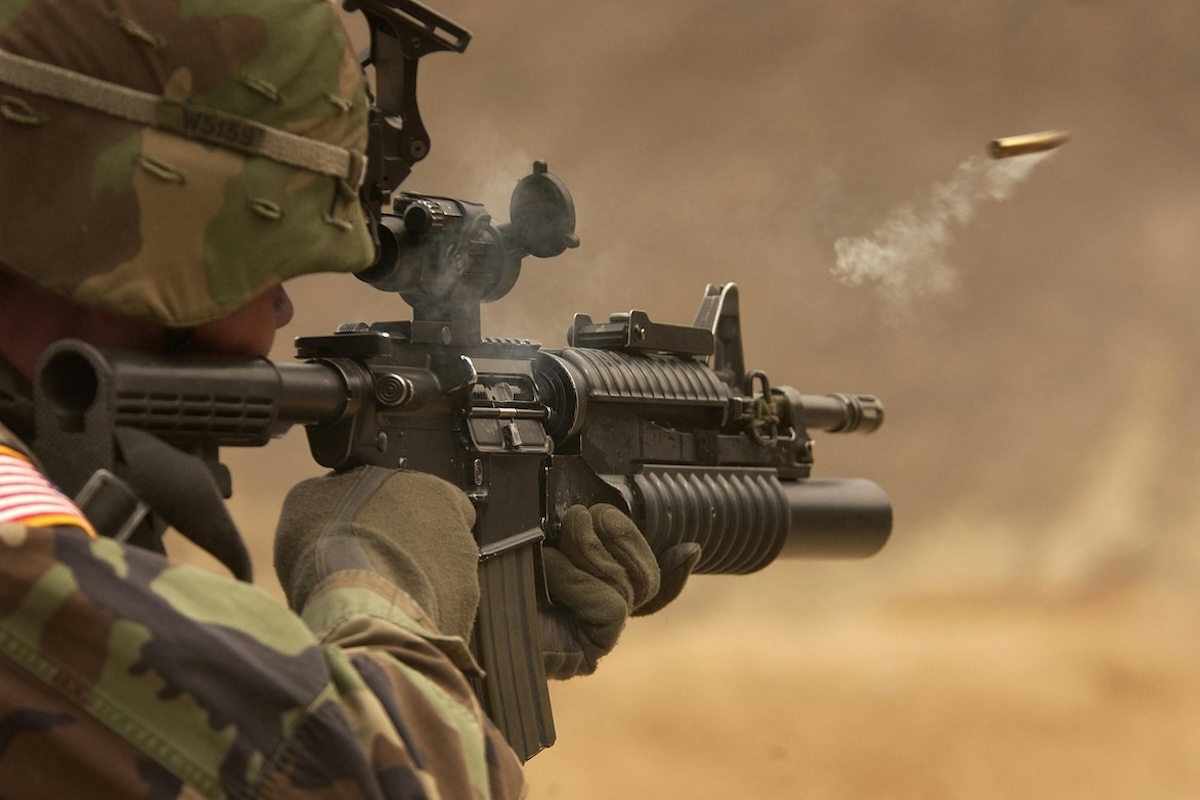Exporters say: “Thanks . . . I Think?”

Be careful what you ask for. That is what some exporters are saying when deciphering the new BIS definition of “Specially Designed.” See language pasted below. Yes, this language is useful and long overdue, but it is certainly not intuitive or user friendly for those not well-versed in the terminology and logic of the EAR. So while the language represents a “Get Out of Jail” card for many companies, it may not be Free.
BIS recognizes that their definition may be confusing and has made a sincere effort to help exporters be self-sufficient. See the tool posted on the BIS website that is specially designed to describe “specially designed.” (I just had to write that.) Find it at: http://beta-www.bis.doc.gov/index.php/specially-designed-tool.
So read the definition below and check out the BIS tool. Getting this definition right is important to you – it might make the difference between coverage of your product under the ITAR or the EAR, or between EAR99 and a license requirement. If you think this definition might benefit your company but you’re still not sure, give us a call. Our regulatory and technical experts will analyze your items and determine your opportunities and obligations.
BIS Definition of “Specially Designed” (EAR Part 772)
When applying this definition, follow this sequential analysis set forth below. (For additional guidance on the order of review of “specially designed,” including how the review of the term relates to the larger CCL, see Supplement No. 4 to Part 774 of the EAR – Commerce Control List Order of Review.)
- a. Except for items described in (b), an “item” is “specially designed” if it:
- 1. As a result of “development” has properties peculiarly responsible for achieving or exceeding the performance levels, characteristics, or functions in the relevant ECCN or U.S. Munitions List (USML) paragraph; or
- 2. Is a “part,” “component,” “accessory,” “attachment,” or “software” for use in or with a commodity or defense article ‘enumerated’ or otherwise described on the CCL or the USML.
- b. A “part,” “component,” “accessory,” “attachment,” or “software” that would be controlled by paragraph (a) is not “specially designed” if it:
- 1. Has been identified to be in an ECCN paragraph that does not contain “specially designed” as a control parameter or as an EAR99 item in a commodity jurisdiction (CJ) determination or interagency-cleared commodity classification (CCATS) pursuant to § 748.3(e);
- 2. Is, regardless of ‘form’ or ‘fit,’ a fastener (e.g., screw, bolt, nut, nut plate, stud, insert, clip, rivet, pin), washer, spacer, insulator, grommet, bushing, spring, wire, solder,;
- 3. Has the same function, performance capabilities, and the same or ‘equivalent’ form and fit, as a commodity or software used in or with an item that:
- i. Is or was in “production” (i.e., not in “development”); and
- ii. Is either not ‘enumerated’ on the CCL or USML, or is described in an ECCN controlled only for Anti-Terrorism (AT) reasons;
- 4. Was or is being developed with “knowledge” that it would be for use in or with commodities or software (i) described in an ECCN and (ii) also commodities or software either not ‘enumerated’ on the CCL or the USML (e.g., EAR99 commodities or software) or commodities or software described in an ECCN controlled only for Anti-Terrorism (AT) reasons;
- 5. Was or is being developed as a general purpose commodity or software, i.e., with no “knowledge” for use in or with a particular commodity (e.g., an F/A-18 or HMMWV) or type of commodity (e.g., an aircraft or machine tool); or
- 6. Was or is being developed with “knowledge” that it would be for use in or with commodities or software described (i) in an ECCN controlled for AT-only reasons and also EAR99 commodities or software; or (ii) exclusively for use in or with EAR99 commodities or software.
Note 1: ‘Enumerated’ refers to any item (i) on either the USML or CCL not controlled in a ‘catch-all’ paragraph and (ii) when on the CCL, controlled by an ECCN for more than Anti-Terrorism (AT) reasons only. An example of an ‘enumerated’ ECCN is 2A226, which controls valves with the following three characteristics: a “nominal size” of 5 mm or greater; having a bellows seal; and wholly made of or lined with aluminum, aluminum alloy, nickel, or nickel alloy containing more than 60% nickel by weight. The CCL also contains notes excluding from control “parts” and “components” “specially designed” for uncontrolled items. Such uncontrolled items are merely ‘described’ and are not ‘enumerated.’ Note 2 to ECCN 1A002 is an example of items excluded from control based on being “specially designed” for a ‘described’ item. Commodities or software in an ECCN controlled only for AT reasons are other examples of items ‘described’ on the CCL. ECCN 2B996, which controls dimensional inspection or measuring systems or equipment not controlled by 2B006, is an example of a commodity ‘described’ in an ECCN controlled only for AT reasons.
Note 2: A ‘catch-all’ paragraph is one that does not refer to specific types of “parts,” “components,” “accessories,” or “attachments” but rather controls non-specific “parts,” “components,” “accessories,” or “attachments” because they were “specially designed” for an enumerated item. For example, ECCN paragraph 9A610.x is a catch-all, because it controls “parts,” “components,” “accessories,” and “attachments” “specially designed” for military aircraft, but does not identify specific types of “parts,” “components,” “accessories,” or “attachments” within its control. Another example of a ‘catch-all’ is the heading of 7A102, which controls “specially designed” components for the gyros enumerated in 7A102, but does not identify the specific types of “components” within its control.
Note to paragraph (a)(1): Items that as a result of “development” have properties peculiarly responsible for achieving or exceeding the performance levels, ‘functions’ or characteristics in a relevant ECCN paragraph may have properties shared by different products. For example, ECCN 1A007 controls equipment and devices, specially designed to initiate charges and devices containing energetic materials, by electrical means. An example of equipment not meeting the peculiarly responsible standard under paragraph (a)(1) is a garage door opener, that as a result of “development” has properties that enable the garage door opener to send an encoded signal to another piece of equipment to perform an action (i.e., the opening of a garage door). The garage door opener is not “specially designed” for purposes of 1A007 because although the garage door opener could be used to send a signal by electrical means to charges or devices containing energetic materials, the garage door opener does not have properties peculiarly responsible for a achieving or exceeding the performance levels, ‘functions’ or characteristics in 1A007. For example, the garage door opener is designed to only perform at a limited range and the level of encoding is not as advanced as the encoding usually required in equipment and devices used to initiate charges and devices containing energetic materials, by electrical means. Conversely, another piece of equipment that, as a result of “development,” has the properties (e.g., sending a signal at a longer range, having signals with advanced encoding to prevent interference, and having signals that are specific to detonating blasting caps) needed for equipment used to initiate charges and devices containing energetic materials, would be peculiarly responsible because the equipment has a direct and proximate causal relationship that is central or special for achieving or exceeding the performance levels, ‘functions’ or characteristics identified in 1A007.
Note 1 to paragraph (b)(3): Commodities in “production” that are subsequently subject to “development” activities, such as those that would result in enhancements or improvements only in the reliability or maintainability of the commodity (e.g., an increased mean time between failure (MTBF)), including those pertaining to quality improvements, cost reductions, or feature enhancements, remain in “production.” However, any new models or versions of such commodities developed from such efforts that change the basic performance or capability of the commodity are in “development” until and unless they enter into “production.”
Note 2 to paragraph (b)(3): With respect to a commodity, ‘equivalent’ means that its form has been modified solely for ‘fit’ purposes.
Note 3 to paragraph (b)(3): The ‘form’ of a commodity is defined by its configuration (including the geometrically measured configuration), material, and material properties that uniquely characterize it. The ‘fit’ of a commodity is defined by its ability to physically interface or interconnect with or become an integral part of another item. The ‘function’ of the item is the action or actions it is designed to perform. ‘Performance capability’ is the measure of a commodity’s effectiveness to perform a designated function in a given environment (e.g., measured in terms of speed, durability, reliability, pressure, accuracy, efficiency). For software, ‘form’ means the design, logic flow, and algorithms. ‘Fit’ means the ability to interface or connect with an item subject to the EAR. The ‘function’ means the action or actions it performs directly to an item subject to the EAR or as a stand-alone application. ‘Performance capability’ means the measure of software’s effectiveness to perform a designated function.
Note to paragraphs (b)(4), (b)(5) and (b)(6): For a commodity or software to be not “specially designed” on the basis of paragraphs (b)(4), (b)(5) or (b)(6), documents contemporaneous with its “development,” in their totality, must establish the elements of paragraphs (b)(4), (b)(5) or (b)(6). Such documents may include concept design information, marketing plans, declarations in patent applications, or contracts. Absent such documents, the “commodity” may not be excluded from being “specially designed” by paragraphs (b)(4), (b)(5) or (b)(6).










